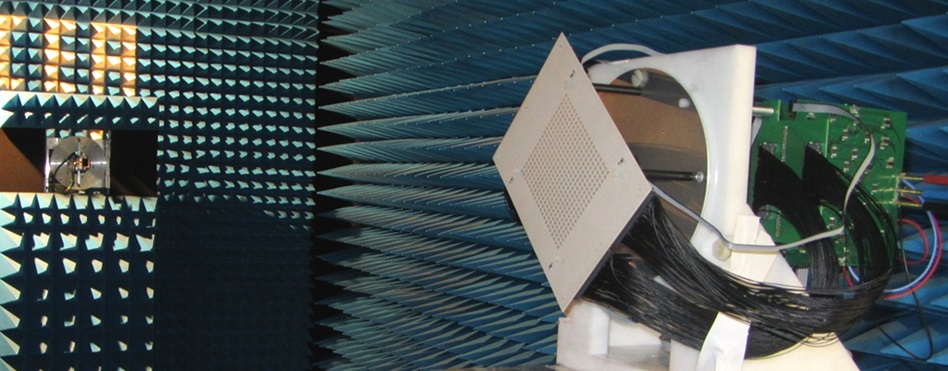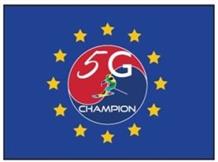The 5G, the ‘Next Generation Communication Networks’, will be a global game changer from a technological, economic, societal and environmental perspective. During the 2018 Winter Olympic Games, with its proof-of-concept in a real 5G communication network, the 5GCHAMPION project highlighted key technologies for 5G two years ahead the official launch of 5G, planned in 2020.
This international collaboration focused on some of the key challenges in designing 5G networks:
- Improve the latency of the order of a millisecond;
- Offer high throughput in very dense user environments;
- Allow an economic management of the network;
- Improve the quality of the service in high-speed mobility conditions, in order to have a location and high precision/integrity time estimates;
- Enable the ubiquity of the service, as well as the flexibility of reconfiguring equipment using software.
The 5G experience in South Korea…
At PeyongChang Olympic host city, visitors on Yulgok Street, nicknamed IoT Street, were able to experience the network while riding the 5GCHAMPION bus between event venues in Gangneung main area. Wearing virtual-reality glasses, they "visited" almost instantaneously and in 3D a site in Oulu, Finland, via a 5G intercontinental connection developed by the project teams. Backhaul stations (point-to-point antenna), developed by the European and Korean part of the consortium, were installed along this IoT street. The data-transfer speed on this proposed 5G mobile network is 5 Gbps (Gigabits/seconde) in vehicles running at 60 km/h.
A rate story
The rate of data connections depends on several factors: mainly the type of application and service used, the available frequency band, and the communication distance. If, today, the 3 and 4G networks allow reaching a rate of 100 Mbit/s for final users, in reality the used frequency bands are saturated and users only have access to a fraction of the maximum rate.
Thanks to new frequency bands and the development of new low-cost architecture, via so-called "backhaul" stations (notably developed by the CEA Leti), 5G makes it possible to obtain bit rates in the order of 5 Gbit/s.…explored the future of telecommunications
The project developed a new architecture that provides an efficient end-to-end system performance encompassing cutting-edge 5G radio-access, a core network and satellite technologies. 5GCHAMPION also investigated new 5G waveforms for satellite communication and algorithms to enable 5G “while on the go” and traveling at up to 500 km/h, such as on high-speed trains.
“This proof of concept is the first time that state-of-the-art terrestrial wireless communication, including future key enablers such as mmWave access, will be seamlessly combined with disruptive satellite communication,” said Dr. Emilio Calvanese Strinati, from CEA-Leti1, and coordinator of the 5GCHAMPION project. “This technology will form a 5G network with multi-radio-access technologies (multi-RAT) that is optimized to serve user equipment in various applications.”

An electronically reconfigurable transmitarray developed by 5GCHAMPION. Typically composed of a focal source that illuminates a planar or conformal array of unit-cells, transmitarrays are an excellent solution in the development of new generation, smart, high-performance telecommunication, radar and imaging systems. © CEA
1 Leti, a technology research institute of the CEA, pioneers micro and nanotechnologies, tailoring differentiating applicative solutions that ensure competitiveness in a wide range of markets. It coordinates for the European part the 5GCHAMPION project.
Strenghtening the ties between the European Union and South Korea
Led and coordinated by CEA-Leti (on the EU side) and ETRI (on the South Korean side), 5GCHAMPION provides an efficient Korean/European collaboration framework, establishing new research and business relationships among consortium partners and guaranteeing a cross-fertilization and thought leadership to be continued after the life-time of the project. The forces of the partners will furthermore be joint to drive the novel technologies to global standards and regulation bodies and thus to maximize the impact through a common Korean/European position.
Why the 5G whereas the 4G is not yet totally deployed ?
It takes about ten years between each generation of mobile telecommunication standard. Since in five to ten years, hundreds of billions of connected objects, autonomous cars, augmented and virtual reality and always better defined videos will be used daily by billions of people, that is why a new standard is already being developed.About 5GCHAMPION

Launched in June 2016 for two years, 5GCHAMPION brings together, under the coordination of the CEA, 21 different high skilled partners 8 European and thirteen Korean. Granted with 3 M € from the EU, the project demonstrated at the PyeongChang Olympic Games the functionalities offered by the 5G technologies developed within this European-Korean collaborative project.